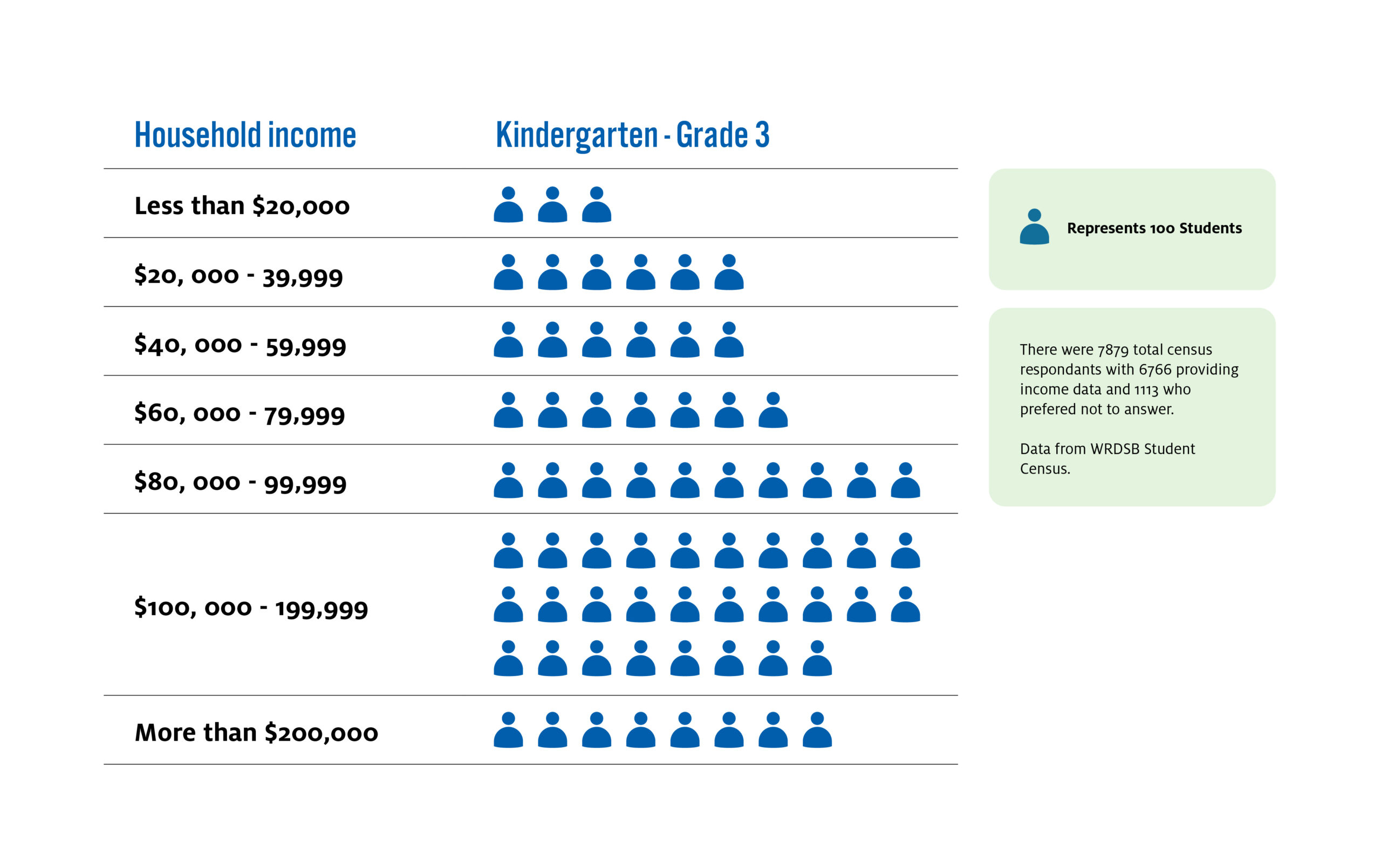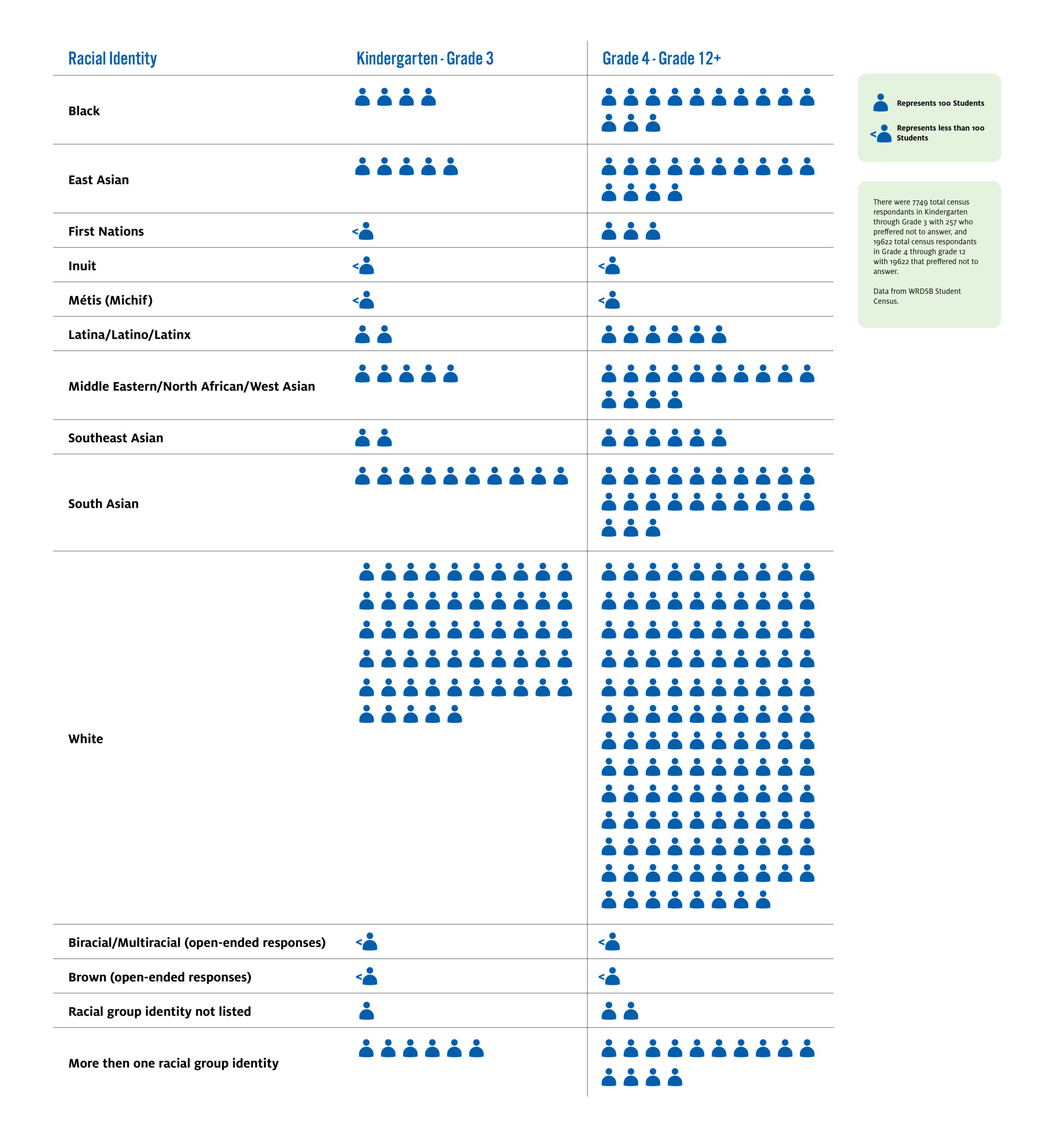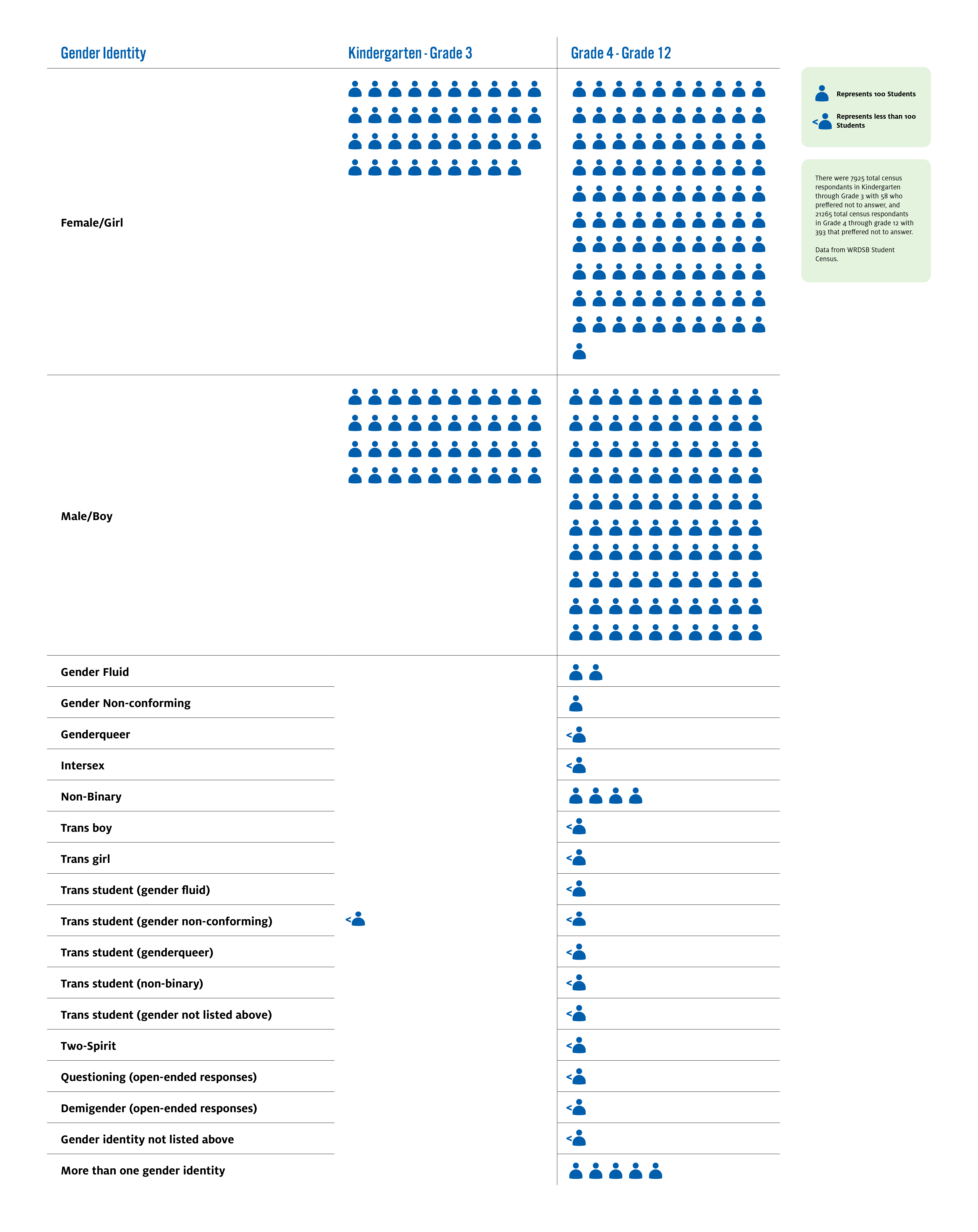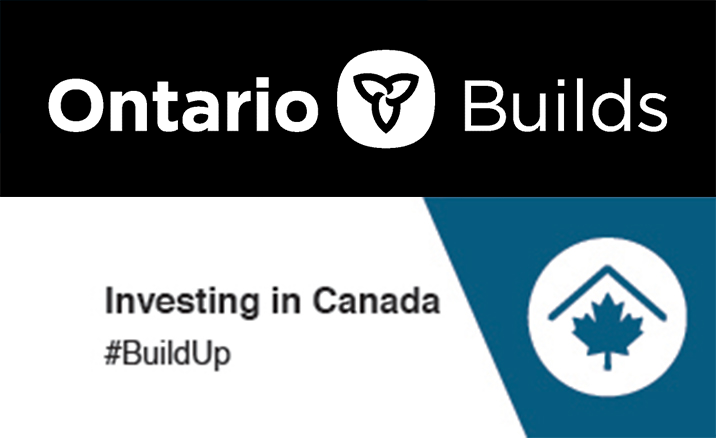
As a school district, we are committed to improving the education system to serve all students and prepare them for an evolving and complex world. This means moving from structures created hundreds of years ago to ones that better prepare graduates for their future pathways.
We intend to transform public education through collaborative relationships, a spirit of innovation, and a clear purpose to support student achievement. The WRDSB’s goal is to have students graduate as literate and compassionate global citizens with the skills to succeed on their chosen pathway.
As students are the primary focus of work, we are committed to engaging with them and consistently centring their voices in decisions about their education, and increasing their sense of connection and belonging at school and throughout the system.

What We Know About WRDSB Students
Last year, as part of the strategic planning process, we conducted a wide range of consultations to bring in the voices of more than 10,000 stakeholders. More than 5,000 of those stakeholders were students.
We engaged with students from Kindergarten to Grade 12 to understand what students want in their school experience and to help inform the new Strategic Plan. We also consulted the 2021 Student Census to gain a greater understanding of the student population.
The 2021 Student Census



Throughout this process, students spoke clearly and passionately about the kind of school district they want and how they would like to engage with the system.
How We Will Engage with Students
Our commitment to centre students requires respect for their agency and voice. We have proposed five strategies to achieve this commitment. These strategies build the mechanisms to centre student voice as we create schools where all students are able to reach their full potential. This means intentionally increasing student engagement and deepening relationships across the WRDSB.
Systems and Structures
New policies will support evolutions in practice across the WRDSB and will form the basis of an overall increase in student engagement. This will be supported by forward-looking considerations of how to better reinforce the conditions for learning.
Mental Health & Wellbeing Awareness, Training & Support
We heard from students that mental health concerns impacted their ability to come to school and engage as their whole selves. From teachers, we heard that their mental health needed support and that parents and caregivers are struggling to understand the complexities of mental health and how to support their children and youth.
To foster practices of meaningful student engagement, the WRDSB must address and create policies and procedures that outline our goals and the mechanisms in place to support students and staff with mental health and well-being awareness.
Additionally, training to support and empower students and staff is an important need to address. We must ensure there is a baseline awareness in recognizing mental health concerns, needs, and best practices. This will be especially critical to WRDSB staff members who engage with students directly.
Trauma-Informed Protocols with Students
As we act on our commitment to engage with students, especially those from marginalized communities, we must also implement trauma-informed protocols. These will protect students and staff alike as they take part in meaningful conversations.
Even with the proper framework in place to engage with students safely, the traumas they experience and witness in and out of school may come through in engagement unexpectedly. Procedures on how to best handle these situations, while maintaining student trust is something we know is needed in WRDSB policies and procedures.
Student Voice in Policy Review and Development
To move our commitment to centring student voice in their education from words to action, we must build the right processes to support the ongoing process of gathering and responding to feedback from students.
A policy specifically on student interaction with the WRDSB would help to define their involvement in policies that directly impact their lives at school. It would help to ensure student voice is considered at all levels of their education. This policy will clearly outline the infrastructure used to gather student feedback, principles to govern decision-making, and the role for students in developing future policies that directly impact them.
It will guide the WRDSB in navigating increased engagement with students and will support the Review Group as they review policies and make decisions centred on the questions:
- How have students been engaged in providing feedback on this policy?
- How do students think this policy will impact their school experience, well-being, and achievement?
Categories: Transforming Education Tags: Student Agency and Voice · Transforming Education







